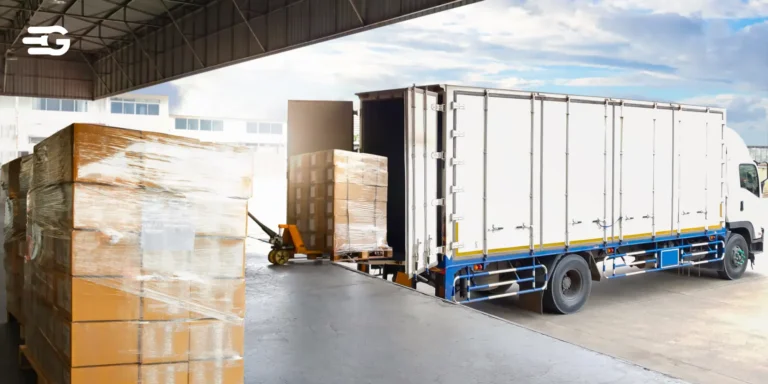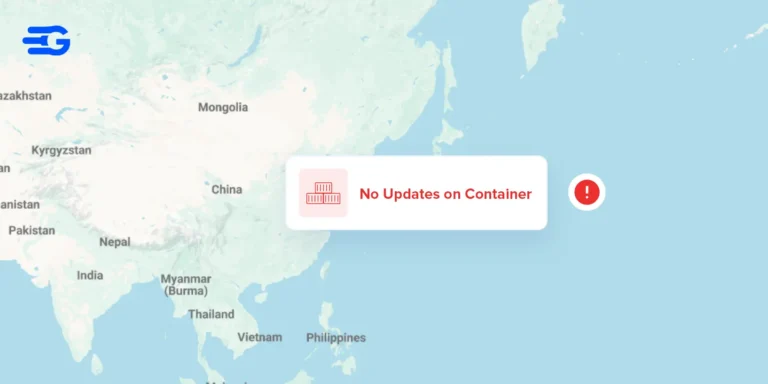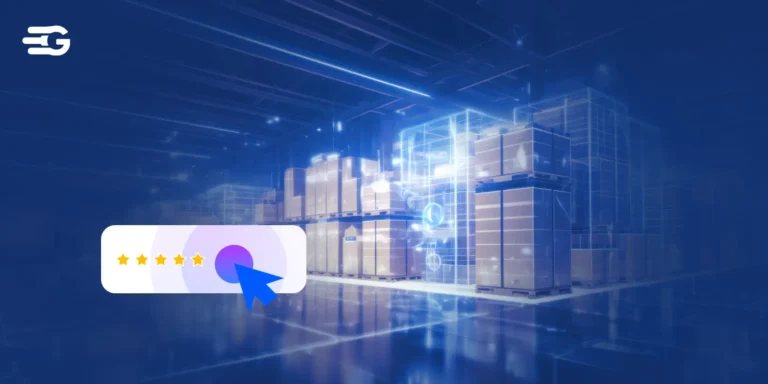The Minority Report Effect: Using AI Dashboards to Predict Supply Chain Disruptions
In today’s rapidly evolving business environment, the ability to predict and mitigate supply chain disruptions has become essential. Companies worldwide are increasingly turning to advanced AI dashboards that aggregate vast amounts of data from multiple sources, including news agencies, social media, weather forecasts, and other real-time information feeds. These dashboards are not only providing immediate alerts but are also offering detailed analyses of potential cost impacts and operational risks. In this article, we explore how these innovative systems work, the benefits they offer, and how companies like GoComet are leveraging this technology to transform supply chain management.
A Paradigm Shift in Supply Chain Management
Historically, supply chain management relied on historical data and reactive measures. Businesses would often respond to disruptions only after they had already impacted operations, leading to costly delays, increased expenses, and lost revenue. Today, however, AI dashboards represent a paradigm shift by enabling proactive management of supply chains. These systems utilize predictive analytics and machine learning algorithms to forecast potential disruptions before they occur, thus giving companies the opportunity to take preventive action.
Real-Time Data Integration
A core strength of modern AI dashboards is their ability to pull data from a wide range of sources. These platforms are designed to monitor:
- News Agencies: By continuously scanning reputable news sources, these dashboards can quickly detect breaking news that might affect supply chains. For example, a sudden strike at a major port, political unrest, or natural disasters reported in real time can trigger immediate alerts.
- Social Media: Social media channels often provide early indications of issues that may not yet have reached mainstream media. The ability to parse through vast amounts of unstructured data allows companies to identify emerging trends and potential risks.
- Weather Forecasts: Advanced weather integration ensures that companies can prepare for natural disruptions, such as hurricanes, floods, or snowstorms, which might impact transportation routes or production facilities.
- Logistics and Transportation Data: Real-time information from transport carriers, shipping lines, and traffic monitoring systems helps companies track shipments and predict delays.
- Economic Indicators: Data feeds that track economic performance, commodity prices, and currency fluctuations offer insights into broader market trends that can affect supply chains.
By consolidating these diverse data streams into a single, intuitive interface, AI dashboards enable supply chain managers to view the entire landscape of potential disruptions at a glance.
The Mechanics Behind Predictive Dashboards
At the heart of these systems is a sophisticated blend of technologies. Let’s take a closer look at the key components that make predictive dashboards so effective:
Predictive Analytics and Machine Learning
Predictive analytics involves using historical data to forecast future events. In supply chain management, this means analyzing past disruptions, transportation delays, and cost variations to predict similar issues in the future. Machine learning algorithms enhance this process by continuously learning from new data inputs, thereby improving the accuracy of predictions over time.
For instance, if historical data indicates that a certain region is prone to logistical delays during a specific season, the dashboard can use this insight to forecast potential disruptions as the season approaches. Over time, as more data is fed into the system, these predictions become increasingly refined, allowing companies to plan more accurately and efficiently.
Real-Time Alerts and Incident Management
One of the most valuable features of AI dashboards is the real-time alert system. When data from external sources—such as a breaking news alert from a global news agency or an unexpected shift in weather patterns—indicates a potential disruption, the system immediately notifies the relevant stakeholders. This rapid response mechanism is essential for minimizing downtime and reducing the cost impact associated with delays.
Moreover, the dashboards often come equipped with incident management modules. These modules allow teams to log incidents, assign responsibilities, and track the resolution process. By providing a central repository for all incident-related information, companies can ensure that no critical detail is overlooked during a crisis.
Cost Impact Analysis
Beyond simply identifying disruptions, modern dashboards also provide detailed analyses of potential cost impacts. This feature is crucial for decision-makers who need to understand the financial implications of a supply chain disruption before acting. By incorporating factors such as expedited shipping costs, production downtime, and increased labor expenses, the dashboards can estimate the overall impact on the bottom line.
For example, if a key supplier experiences an unexpected shutdown, the system can calculate the potential costs of finding an alternative supplier, the price differences, and the possible delays in production. This information allows executives to make informed decisions about whether to absorb the additional costs or invest in contingency measures.
The Role of AI in Driving Efficiency
The integration of AI in supply chain management is not just about predicting disruptions; it’s about driving overall efficiency and resilience. Here’s how AI is making a difference:
Enhanced Decision-Making
With access to real-time data and predictive insights, decision-makers are no longer flying blind. They can see potential issues before they escalate and take action to mitigate risks. This level of preparedness not only reduces operational disruptions but also helps in optimizing inventory levels, improving delivery times, and reducing overall operational costs.
Strategic Resource Allocation
One of the most significant benefits of AI dashboards is their ability to help companies allocate resources more effectively. By predicting where and when disruptions are likely to occur, companies can preemptively allocate extra resources to critical areas. For example, if a dashboard forecasts a delay in a particular region, a company might decide to stockpile inventory or reroute shipments to minimize the impact.
Continuous Improvement Through Data Feedback
AI systems are designed to learn from every disruption. Each incident, whether successfully managed or not, provides valuable data that can be used to improve future predictions. This continuous feedback loop ensures that the system evolves over time, becoming more accurate and more integral to the overall supply chain strategy.
GoComet: Pioneering the Future of Supply Chain Visibility
Among the companies at the forefront of this technological revolution is GoComet. Known for its innovative approach to supply chain management, GoComet is providing a realistic, user-friendly experience that leverages the power of AI dashboards. Their platform integrates many of the features described above, offering:
- Comprehensive Data Integration: GoComet’s dashboard pulls data from a myriad of sources, including live news feeds, weather forecasts, and transportation data, providing a holistic view of supply chain operations.
- Real-Time Disruption Alerts: The platform continuously monitors global events and can issue real-time alerts when potential disruptions are detected, ensuring that supply chain managers are always one step ahead.
- Cost Impact Analysis: By calculating the financial implications of potential disruptions, GoComet empowers businesses to make informed decisions that balance risk with cost efficiency.
- User-Friendly Interface: Despite its advanced capabilities, the dashboard is designed to be intuitive and accessible. With clear visualizations and easy-to-navigate modules, even users without a deep technical background can quickly grasp the critical insights.
GoComet’s approach exemplifies how AI-driven dashboards are not just futuristic concepts but practical tools that deliver tangible benefits today. Their platform serves as a testament to the potential of these systems to revolutionize supply chain management, providing real-time insights and predictive capabilities that drive operational excellence.
The Future of Supply Chain Management
As businesses continue to navigate an increasingly complex global marketplace, the role of AI in supply chain management will only grow. The ability to predict disruptions before they occur—and to quantify their potential cost impact—represents a significant leap forward in operational efficiency and risk management.
Embracing a Data-Driven Future
The journey towards a fully data-driven supply chain is already underway. Companies that invest in AI dashboards today are positioning themselves to better handle the uncertainties of tomorrow. By harnessing the power of real-time data from news agencies, social media, weather services, and economic indicators, these systems are transforming the way businesses operate.
The Evolution of Predictive Analytics
Predictive analytics is still in its early stages in many industries, and supply chain management is no exception. As algorithms become more sophisticated and data sources more diverse, the accuracy and reliability of these predictive models will continue to improve. This evolution will pave the way for even more proactive supply chain management strategies, reducing the need for reactive measures and minimizing the impact of unforeseen disruptions.
Building Resilience Through Innovation
Ultimately, the integration of AI dashboards into supply chain management is about building resilience. In an era where global disruptions—from pandemics to geopolitical conflicts—can have far-reaching impacts, the ability to foresee and mitigate these challenges is invaluable. Companies that embrace this technology will not only safeguard their operations but also gain a competitive edge in the market.
Conclusion
The transformation of supply chain management through AI dashboards marks a significant milestone in the evolution of business operations. By integrating real-time data from diverse sources, these systems offer unparalleled insights into potential disruptions and their associated costs. The ability to predict issues before they arise allows companies to act swiftly, minimizing operational risks and safeguarding profit margins.
Platforms like GoComet are leading the charge, demonstrating that the future of supply chain management is not a distant dream but an achievable reality. As these technologies continue to advance, businesses across the globe will benefit from more resilient, efficient, and proactive supply chains.
In embracing the Minority Report Effect—without being overly reliant on cinematic references—companies are now empowered to transform challenges into opportunities. The future of supply chain management is here, driven by intelligent, data-powered dashboards that provide clarity, foresight, and strategic advantage in an ever-changing world.





